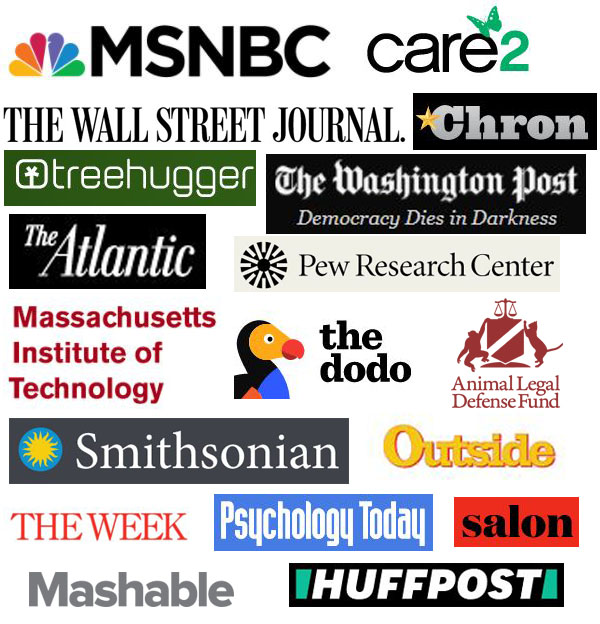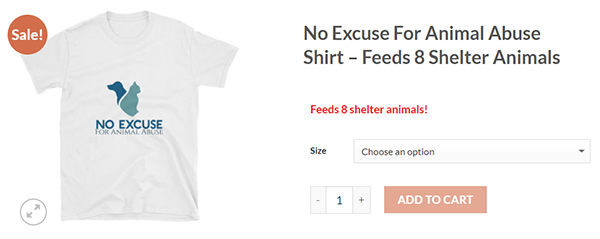Educational Series: Leather is a Disaster for Animals and the Planet
By Nick Engelfried
If you are an animal lover, you almost certainly know about the environmental harm and animal suffering caused by the cattle industry. Cattle farming is responsible for massive deforestation and a significant percentage of global carbon emissions. It also subjects millions of animals to short lives of pain and cruelty. This has, quite rightly, made the meat and dairy industries main targets for animal rights organizations.
However, while most public awareness about harmful impacts from cattle farming focuses on food production, the role of the leather industry in incentivizing cruel, unsustainable practices often goes forgotten. Leather is used to make everything from shoes, to purses, to car interiors–and like meat and dairy products, it’s a major cause of suffering for countless animals and the planet. Educating the public about the leather industry’s footprint is an essential part of shedding light on the harm caused by cattle farming.
One reason the dangers of leather production receive relatively little public attention is that the industry presents leather as a mere byproduct of meat farming, using cattle skins which would otherwise go to waste. This makes leather seem at first glance like a sustainable product–or even an environmentally friendly industry that “upcycles” material destined for landfills. The reality is much more complicated. In fact, leather is a major part of what keeps many beef farming operations afloat.
According to a study summarized in the journal Faunalytics, selling leather accounts for 26% of revenue from slaughterhouses worldwide. The opportunity to sell hides for leather is therefore an important part of what makes farming cattle for meat profitable–which means that without demand for leather, fewer cows would be raised and killed every year. Far from harmlessly utilizing a byproduct of beef production, leather has contributed to the spread of some of the cruelest, most unsustainable types of farming on the planet.
The money cattle farmers receive for hydes used to make leather provides a financial incentive for them to raise more cattle–and in many cases, this occurs in factory farms or feedlots where cows are confined in horrific conditions for the duration of their short existences. These farming operations are a major source of methane and other carbon emissions, as well as ammonia, hydrogen sulfide, volatile organic compounds, and other substances that pollute the surrounding air and water. Demand for leather makes factory farming more profitable, contributing to this environmental and animal welfare disaster.
Leather also adds to deforestation caused by the cattle industry–especially in Brazil and other South American countries, where cattle ranching is eating into some of the world’s most biodiverse rainforest ecosystems. Beef ranching is the single biggest immediate cause of deforestation worldwide, and leather is an integral part of that industry.
Then there are the harmful side effects of leather production itself. Modern tanning methods use harmful chemicals like chromium, which causes respiratory illnesses and an increased risk of lung cancer when inhaled. This is an especially big problem in developing countries like India, where much of the world’s leather production occurs. In the absence of enforceable environmental regulations, chromium emissions pollute surrounding communities in some of the world’s most densely populated regions. In fact, almost 1.5 million people around the globe are estimated to be at risk from chromium pollution linked to leather tanneries.
So, how can people who care about animals and the environment push back against the damage caused by the leather industry? As individuals we can of course decline to buy new products made from leather, and this is always a good idea. However, ultimately, large corporate buyers and sellers of leather need to feel enough pressure from consumers to make them change their practices. This makes it important that we understand where the bulk of demand for leather is coming from.
An expensive jacket or pair of running shoes might be what comes to mind first when you picture leather products. However, according to the World Wildlife Fund, fully 20% of leather made around the world is used by car companies to line the seats and interiors of their vehicles. In fact, the auto industry is the single biggest user of leather from Brazil. Car and clothing companies must make the transition to more sustainable materials in order to cut off this demand.
Some companies are already taking steps in the right direction. Unfortunately, though, most common leather alternatives are made from petroleum-based materials that come with a whole new set of environmental problems. However, some corporate innovators are experimenting with more truly sustainable leather substitutes. The company Ananas Anam makes a leather alternative from pineapple leaves, while the Italy-based Vegea uses wine industry byproducts like grape seeds and stalks. There is even a push to make a leather substitute from fungi, led by the company MycoWorks.
Even the auto industry, which has long relied on leather as a durable, wear-resistant product for lining the seats and steering wheels of its cars, is making moves to find alternatives. In 2019, Tesla announced it would no longer use leather in its vehicles–but the company has drawn criticism since then for mostly replacing leather with petroleum-based alternatives. In what may be a more promising development, Volkswagen recently launched a partnership with the German startup company Revoltech GmbH, to develop sustainable leather alternatives that could be lining their car interiors as soon as 2028.
Like drastically reducing the world’s meat consumption, phasing out the use of leather won’t be an easy job. It will require creative innovators, companies willing to make a change, and consumers and activists putting pressure on the biggest corporate players in the leather business. One thing is certain, though: replacing leather in our clothing, cars, and other products with truly sustainable alternatives will help take pressure off endangered ecosystems and protect countless animals from harm.
Photo credit: Pixabay
Wait, there’s one more step:
Over 1,620,280 Animal Shelter Meals Donated So Far –
Upgrade to a Premium Membership to get a free No Excuse For Animal Abuse shirt, feed shelter animals with the Educational Series and Meal Wheel, sign 100’s of petitions with one-click, remove ads, and promote your favorite petitions to millions!
7 day money-back guarantee for new members. Zero risk.
Premium Membership comes with the following perks:
• Get a free No Excuse For Animal Abuse shirt.
• Feed shelter animals by spinning the Meal Wheel.
• Sign 100’s of petitions with one-click.
• Feed shelter animals with the Educational Series quizzes.
• Remove ads and vote on which petitions are displayed to millions of people.
Our Guarantee:
Cancel your subscription for any reason within 7 days and we’ll refund 100% of your money, as long as you’re a first time member.
Frequently Asked Questions:
How are the animal shelter meals donated?
We donate shelter meals through Rescue Bank because they research all shelters, maintain equitable distribution, and track the meals from their facilities all the way to the rescue groups. This ensures that the donation will be utilized in the most efficient and impacting way.
Why don’t we just donate meals without providing any perks like the Meal Wheel?
We’ve been at this since 2008 and have learned that to really make a difference, we need to get people excited and engaged. Our mission is a serious one, but our methods are playful and educational. We’re serious about doing good, but also want to make it fun.
Who are we?
We are a family of sites that works to protect animals, the environment, and more. Our sites include AnimalPetitions.org and ForceChange.com. We’ve been at this for over a decade and are dedicated to protecting and defending animals and the environment. If we can have some fun and improve the world, then we’re accomplishing our goal!

We’ve Been Doing This for Over a Decade and Others Have Taken Notice:

Testimonials:
“Thank you SO much for the premium feature of being able to sign multiple petitions with one click. Many of us go for hours at a time signing each and every petition and crying as we read them. I have often wished for a way to sign my name on every petition because I passionately support them and they all need our voice. This is the best thing – thank you very much!” -Karilyn K., Premium Member“This is just the most amazing wonderful service that makes me so happy! To be able to feed shelter pets is just the greatest feeling. Thanks again for this, and for all you do for the most innocent and helpless among us, the animals. I’m lovestruck.” Sandra Z., Premium Member
“I love the upgrade option and I am so glad I did it.....it enables me to stand with you and many others to fight for the justice these precious souls deserve! We are their voice!!!! And....I adore helping to feed them as well! The spin the wheel game is fun....and I like doing it everyday to help! Keep up the wonderful work....and I know....every click makes a difference!” Dorothy B., Premium Member
“I am so excited to become a Premium Member and to have one-click signing, as I was spending countless hours signing petitions...not that I mind doing it, but my goodness, there sure are a lot of them. I always hope that my signature somehow helps, because these people that abuse/torture animals, need to be put away. As you can tell, that is my passion, I have such a heart for animals, and I want to be their voice.” Darlene R., Premium Member
“Thank you so much! I love being a premium member and spinning that wheel every day, especially when I land on 4 or, best of all, 5 meals. Thank you for all you do, we are all so grateful for you.” Sandy T., Premium Member
“With deepest Aloha, You have no idea how grateful I am for you!” Jan L., Premium Member
“Thank you for the Premium Membership option. I really appreciate that I can sign multiple petitions with one click. It's great! Thank you for the work you do.” Ashley H., Premium Member
“I absolutely love the Educational Series!” Yvonne L., Premium Member
"I am a premium member and religiously sign every petition. THANK YOU for this platform. I also vote for the petition nearest my heart, sometimes voting globally, sometimes I am caught by an individual animal's plight. What gives me great pleasure is noting that almost always, the percentages have no more than a 6-7% spread. It means that, overall, everyone cares about all of the petitions ALMOST EQUALLY! LOL, I also spin that wheel, and when I get 4 or 5 meals, I dance around the room! I have long maintained that what someone does to a helpless animal, they will do to a weaker human if they think that they can get away with it. Those who abuse, no matter how many legs their victims have, should be punished to the fullest extent of the law." Rebecca E., Premium Member
"I LOVE LOVE LOVE my Premium Membership! Everything and anything I can do to help animals and contribute to justice in the world makes me very happy!" Jan L., Premium Member
"Thank you, I love what you do. My friends and I love the membership because we can sign so many more petitions that we may never had heard of. Keep up the good work." Virginia G., Premium Member
Still have questions? Email us: animalpetitions@forcechange.com
Nick Engelfried Writes About Animals, the Environment, and Conservation for the ForceChange network









